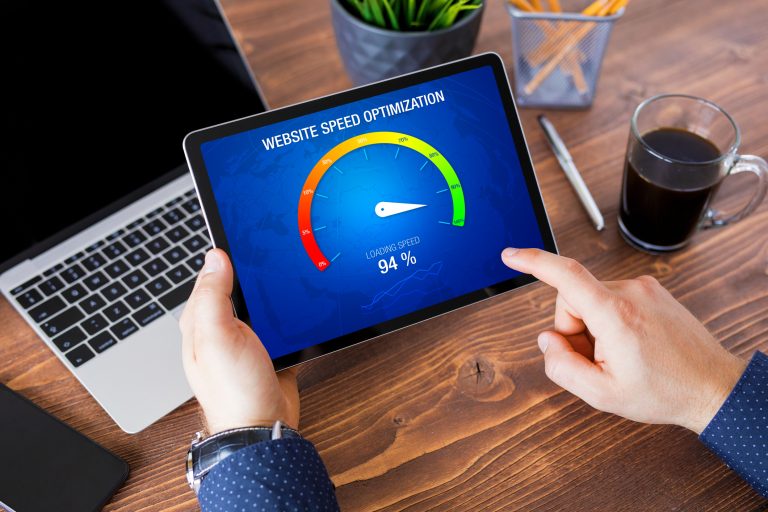In today’s fast-paced digital age, attention spans are shorter than ever. If your website takes too long to load, users won’t think twice before bouncing off to a competitor. That’s why website speed optimization is no longer a nice-to-have—it’s a critical factor in user experience, SEO, and business success.
Let’s explore why optimizing your website’s speed matters, what affects it, and how you can improve it—often without spending a dime.
What is Website Speed Optimization?
Website speed optimization is the process of improving how quickly your website loads and becomes interactive for users. This includes everything from reducing image sizes and server response times to optimizing scripts and enabling caching.
Fast-loading websites offer a smooth user experience, which keeps users engaged and boosts your search engine rankings. It also impacts your conversion rates—because when a site is slow, visitors rarely stick around.
Why Website Speed Optimization is Crucial for User Experience
Website speed directly influences how users perceive and interact with your brand. A website’s loading speed is often the first impression visitors get, and it plays a key role in their overall experience. Here’s why it matters:
- First Impressions Count: A site that loads in under 3 seconds builds trust and credibility.
- Lower Bounce Rates: A 1-second delay can increase bounce rates by over 30%.
- Better SEO Rankings: Google rewards fast websites with higher visibility in search results.
- Improved Mobile Experience: Mobile users are especially impatient with slow-loading pages.
- Increased Conversions: Faster sites guide users through the funnel more efficiently.
In short, slow websites frustrate users—fast websites convert them.
Tools for Website Speed Testing
Before you optimize, you need to evaluate your current performance. Here are some of the best tools to run a website speed test:
- Google Website Speed Test (PageSpeed Insights)
Provides performance scores for mobile and desktop, along with suggestions. - GTmetrix
Analyzes load times, structure, and overall performance scores. - Pingdom Tools
Offers global testing locations to simulate real-world scenarios. - WebPageTest.org
Ideal for detailed, technical speed metrics and performance waterfalls.
These tools offer actionable insights to help you target areas that need improvement.
Common Factors Slowing Down Your Website
Several technical and design issues can negatively impact page speed:
- Large, uncompressed images
- Render-blocking JavaScript and CSS
- Excessive third-party scripts
- Lack of browser caching
- Shared hosting environments
- Too many HTTP requests
- Outdated plugins or CMS themes
Addressing these can significantly improve your loading times.
Best Practices for Website Speed Optimization
Here are tried-and-tested ways to boost your site’s performance:
- Compress and Resize Images: Use WebP format or tools like TinyPNG.
- Minify CSS, HTML, and JavaScript: Remove unnecessary spaces and code.
- Enable Browser Caching: Store static content locally for repeat visitors.
- Use a CDN (Content Delivery Network): Serve your site faster to users across regions.
- Reduce Redirects: Keep the redirect chain as short as possible.
- Upgrade Hosting: Switch to VPS or cloud hosting for better response time.
- Lazy Load Images and Videos: Load media only when it enters the viewport.
Following these website speed optimization practices will create a smoother, faster user journey.
Free Tools and Tips for Website Speed Optimization
You don’t always need a big budget to improve your site speed. Here are some website speed optimization free tools and resources:
- Cloudflare CDN (Free Tier): Accelerates your site globally and offers security.
- ImageOptim / Squoosh: Compress images without losing quality.
- WP Super Cache: A free caching plugin for WordPress sites.
- Chrome DevTools: Analyze loading performance and fix issues directly.
- Google PageSpeed Insights: Audit your site and get tailored improvement suggestions.
These tools are ideal for startups, bloggers, and small businesses looking to enhance performance without hiring a developer.
Avoid These Common Mistakes
Here are pitfalls to avoid when optimizing for speed:
- Overusing large plugins or widgets
- Not optimizing mobile performance
- Using auto-play videos above the fold
- Ignoring speed reports after website updates
- Not testing your site across different devices
Staying vigilant and testing regularly is just as important as the initial setup.
Key Takeaways: Speed = Experience + Conversions
Let’s recap why website speed optimization should be a top priority:
- Builds trust and professional credibility
- Reduces bounce rates and increases engagement
- Boosts SEO visibility and traffic
- Improves mobile and desktop user experience
- Directly impacts conversions and revenue
A fast website isn’t just a technical win—it’s a business asset.
Take the First Step Toward a Faster Website
Start today with a Google website speed test or try one of the free tools mentioned. Remember, even small improvements in speed can make a big difference in how users experience your brand.
Looking for a checklist or personalized tips to boost your site speed? Just ask—I’d be happy to help.
